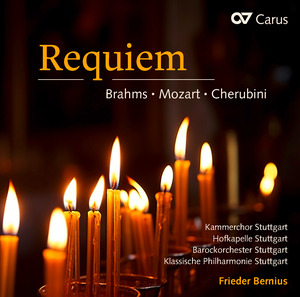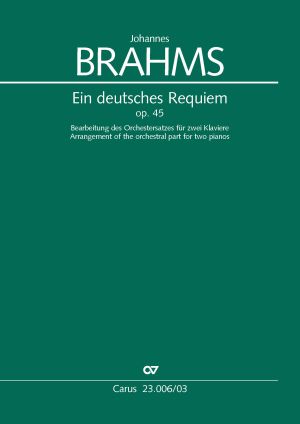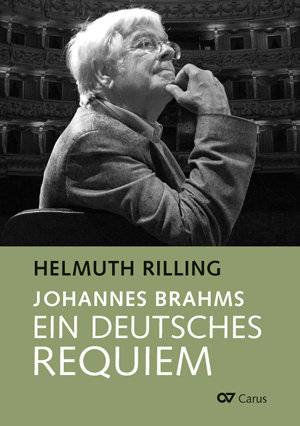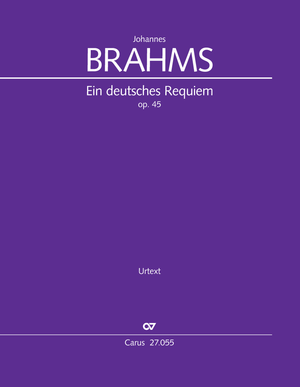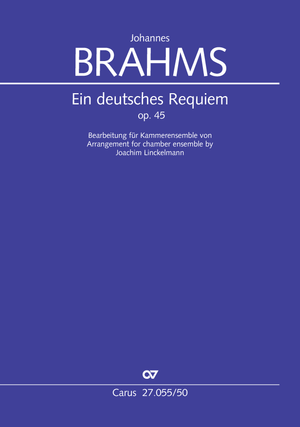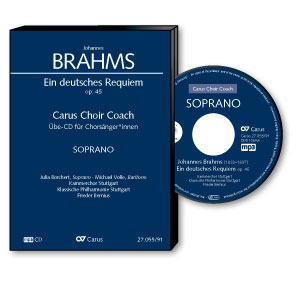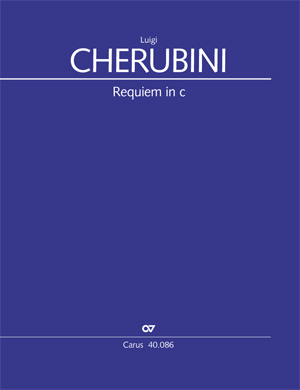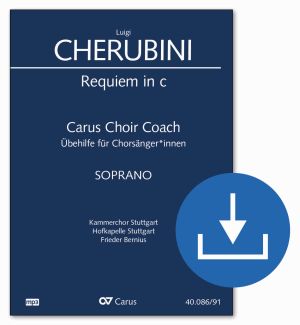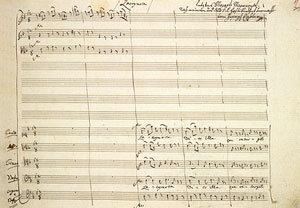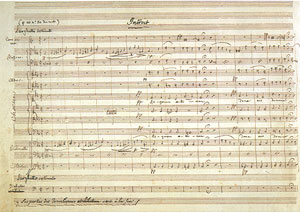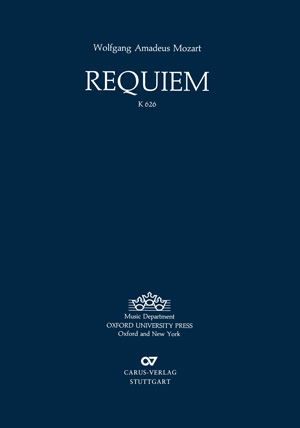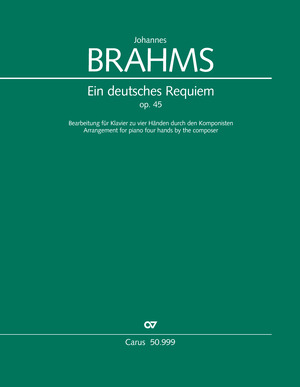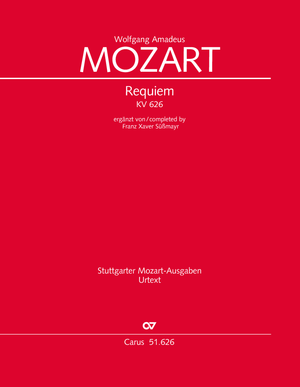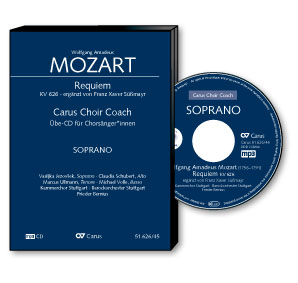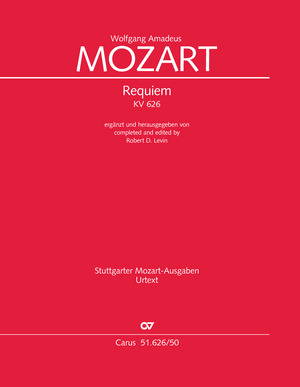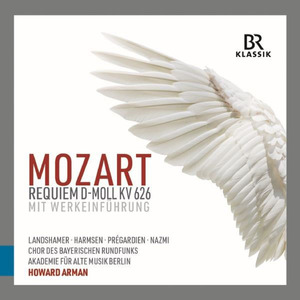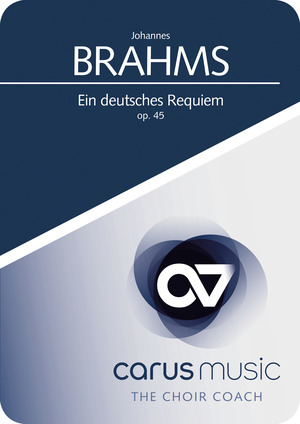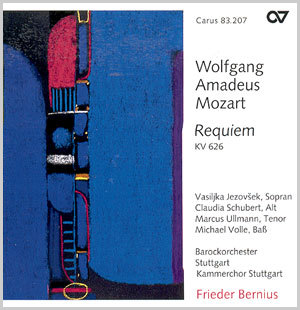Requiem
Johannes Brahms: Ein deutsches Requiem, Luigi Cherubini: Requiem in c, W.A. Mozart: Requiem
Three key works of the requiem literature are combined in this box set: Brahms’s German Requiem, Op. 45, Mozart’s Requiem, K. 626, and the Requiem in C minor by Luigi Cherubini. Frieder Bernius conducts the Stuttgart Chamber Choir, the Hofkapelle Stuttgart and the Stuttgart Baroque Orchestra. The soloists are sopranos Julia Borchert and Vasiljka Jezovšek, alto Claudia Schubert, tenor Marcus Ullmann and bass Michael Volle.
Johannes Brahms’s German Requiem, Op. 45, is one of the most beloved and frequently performed works in the history of choral symphonic music. Here Brahms successfully created an interdenominational piece of funeral music in which the choir takes center stage as the voice of the community.
Mozart’s final work, the Requiem, K. 626, which was unfinished at the time of his death, is performed here in the version prepared by Franz Beyer in 1981. While Beyer largely retained Franz Xaver Süßmayr’s additions, he significantly improved the orchestration of the final sections.
The Requiem in C minor by Luigi Cherubini quickly became popular with contemporary audiences. Brahms and Schumann were great admirers of the work, which was even played at Beethoven’s funeral service. Dispensing with solo singers, Cherubini aimed to achieve an inwardness of expression closely rooted in the text.
Contents
-
Preface writer
Thomas Schnidt-Beste
-
Preface writer
Wolfgang Hochstein
| 1950
-
Preface writer
Franz Beyer
| 1922-2018
-
Choir
Kammerchor Stuttgart
The Kammerchor Stuttgart is regarded as one of the best ensembles of its kind. Over its fifty-year existence, Frieder Bernius has developed the choir into an exceptional ensemble acclaimed by audiences and press alike. This has led to invitations for the choir to perform at all the important European festivals. In Germany the chamber choir performs at festivals and in concert halls in repertoire ranging from the 17th to the 21st century. Frieder Bernius and his ensemble have received numerous accolades for their contribution to new music. The Kammerchor Stuttgart has made over 80 CDs and LPs, numerous of which have been awarded international recording prizes (including the Edison award, Diapason d’or, Gramophone Choice, Classical Internet Award, International Classical Music Award, and German Record Critics’ Award prizes). The International Federation for Choral Music has invited the ensemble to sing at the 1st, 4th and 10th World Symposia on Choral Music in Vienna, Sydney and Seoul. Regular tours of North America and Asia since 1988 and a South America tour reflect the Kammerchor Stuttgart’s international reputation. Since 1984 the top ensemble has also been invited to Israel biennially. Personal details
-
Orchestra
Barockorchester Stuttgart
The Barockorchester Stuttgart, which was founded by Bernius in 1985, specializes in 18th century music. The musicians are among the leading representatives of historical performance practice and perform exclusively on original instruments. The ensemble dedicates itself to a large extent to the revival of 18th century operas. It has performed at numerous international festivals, among others in Rome, Dresden and Göttingen. Personal details
-
Orchestra
Klassische Philharmonie Stuttgart
The Klassische Philharmonie Stuttgart is comprised of musicians from leading German symphony orchestras and chamber ensembles who have been performing with Frieder Bernius over a long period. Although the orchestra uses modern instruments, the conductor and his players are particularly interested in stylistic distinctions. For performances of large-scale choral works, the Klassische Philharmonie Stuttgart is the orchestral pendant to the Kammerchor Stuttgart. The orchestra has participated in a variety of events, including the Rheingau Music Festival, Stuttgart European Musikfest, Baden-Württemberg International Festival, Wratislavia Cantans Festival in Wroc³aw (Poland), the Kassel Music Festival, the Philharmonic Society of Brussels and the Herbstliche Musiktage Bad Urach. The idea of creating an orchestral partner of equal quality to the Kammerchor Stuttgart has been vindicated not least by their joint recording of Johannes Brahms’ A German Requiem. The French periodical Répertoire has confirmed Frieder Bernius’s vision of the work as a “discographic knockout.” Personal details
-
Orchestra
Hofkapelle Stuttgart
The Hofkapelle Stuttgart, founded in 2006 by Frieder Bernius to complement the Barockorchester Stuttgart, concentrates on repertoire from the 19th century performed on authentic instruments. One of its main focusses is the rediscovery of music-historical treasures, particularly works from the south-west German region (by composers such as Kalliwoda, Knecht and Holzbauer). The Hofkapelle and Barockorchester Stuttgart regularly perform at international festivals (Rome, Salzburg, Göttingen, Dresden, etc.). CDs made by both groups have received many awards: the Missa Dei Patris by Jan Dismas Zelenka was nominated for the Cannes Classical Award, and the Incidental Music to Shakespeare’s Ein Sommernachtstraum [A Midsummer Night’s Dream] by Felix Mendelssohn Bartholdy was featured by Rondo magazine and awarded the Star of the Month prize by Fono Forum magazine. Mozart’s Requiem received the Diapason d’or de l’année 2003, Johann Gottlieb Naumann’s opera Aci e Galatea was named opera recording of the year in Opernwelt magazine and Bach’s Easter Oratorio included in the Quarterly Critics’ Choice of the German Record Critics’ Award. The group’s recording of Bach’s B Minor Mass was Editor’s Choice in Gramophone magazine. Personal details
-
Conductor
Frieder Bernius
| 1947Frieder Bernius’s work has earned great worldwide recognition. He is in demand internationally as a conductor and as a teacher. His principal artistic collaborators are the ensembles he founded himself, the Kammerchor Stuttgart, the Barockorchester Stuttgart, the Hofkapelle Stuttgart and the Klassische Philharmonie Stuttgart. As a guest conductor, he has collaborated repeatedly with, for example, the SWR Vokalensemble Stuttgart, the Deutsche Kammerphilharmonie Bremen, the Stuttgarter Kammerorchester and the Streicherakademie Bozen. Great stylistic versatility is Frieder Bernius’s hallmark. Whether he conducts vocal works by Monteverdi, Bach, Händel, Mozart, Beethoven, Fauré and Ligeti, stage music by Mendelssohn or symphonies by Haydn, Burgmüller and Schubert, his work always aims for a sound that is at once unmistakably personal and at the same time oriented towards the original period sound ideal. He devotes himself equally to the rediscovery of 18th century operas and to first performances of contemporary compositions. He is particularly interested in the musical history of southwestern Germany. Carus-Verlag has awarded Frieder Bernius a Golden CD for his complete recording of the sacred music of Felix Mendelssohn Bartholdy. The award was presented to him during the German Choir Festival in Stuttgart 2016. The sale of over 250,000 recordings, which has been acclaimed with a number of awards, has made a not insignificant contribution to what today is the obvious presence of Mendelssohn's complete œuvre in the concert repertoire. Personal details
-
Soloist - soprano
Vasiljka Jezovsek
-
Soloist - soprano
Julia Borchert
Julia Borchert ist seit 1997 als lyrischer Sopran am Niedersächsischen Staatstheater Hannover verpflichtet. Die in Bad Pyrmont geborene Sängerin begann an der Essener Folkwangschule ein Musiktheaterstudium, das sie bei Professor Ingeborg Most in Freiburg fortsetzte und 1991 im Rahmen der Künstlerischen Reifeprüfung mit Auszeichnung abschloß. Im selben Jahr trat sie ihr erstes Engagement am Nationaltheater Mannheim an und blieb dem Hause sechs Jahre lang verbunden. Als ständiger Gast singt die Künstlerin im Württembergischen Staatstheater Stuttgart seit 1995 die Gretel (Hänsel und Gretel). Weitere Gastspiele führten sie nach Karlsruhe, Bern, Düsseldorf, Köln und an die Bayerische Staatsoper München. Neben dem Opernfach gilt Julia Borcherts besondere Liebe dem Lied- und Konzertgesang. Personal details
-
Soloist - alto
Claudia Schubert
Claudia Schubert began studying singing in 1986 at the Hochschule für Musik und Darstellende Kunst in Frankfurt with Elsa Cavelti and participated in master classes with Laura Sarti in London. From 1987 to 1991 she held a scholarship from the Studienstiftung des Deutschen Volkes. Since 1987 she has appeared in many important music centers in Europe, in Israel, Japan, Canada and the USA. At renowned festivals for early music she has collaborated with conductors such as Frieder Bernius, Frans Brüggen, Sir John Eliot Gardiner, Reinhard Goebel, Ton Koopman, Herrmann Max, and Jordi Savall. Her activities have been augmented with guest appearances at the opera houses in Frankfurt, Brussels and Salzburg. Personal details
-
Soloist - bass
Michael Volle
Frequent questions about this work
 There are no questions and answers available so far or you were unable to find an answer to your specific question about this work? Then click here and send your specific questions to our Customer Services!
There are no questions and answers available so far or you were unable to find an answer to your specific question about this work? Then click here and send your specific questions to our Customer Services!


